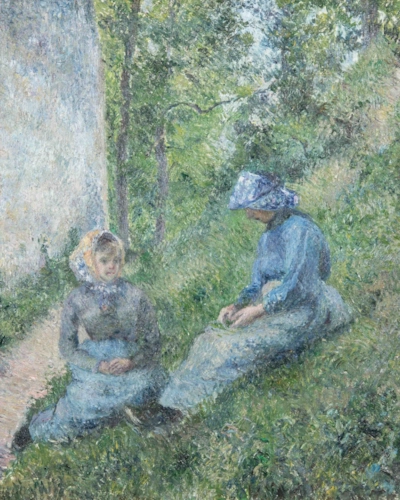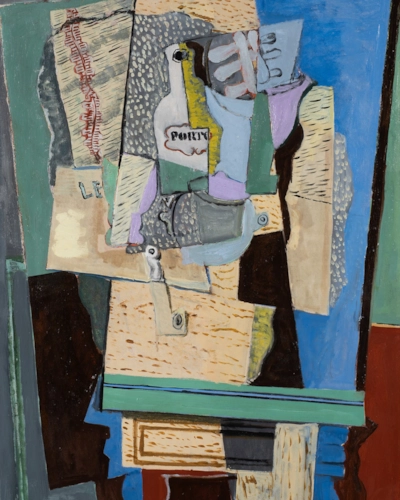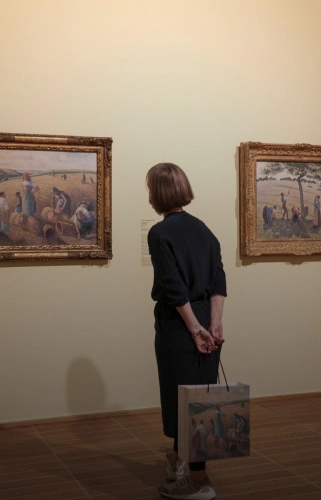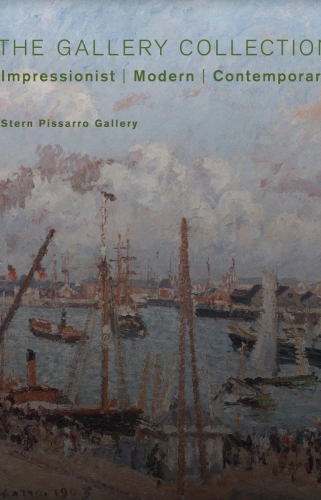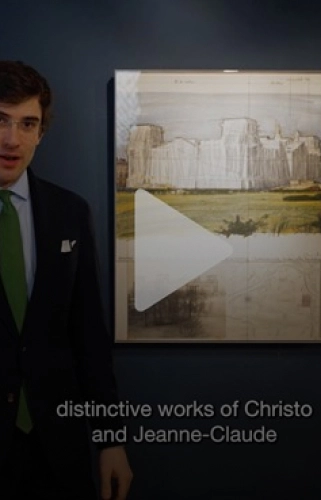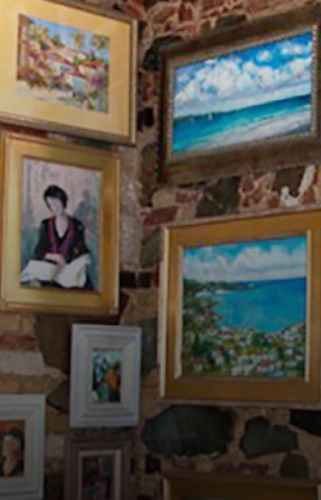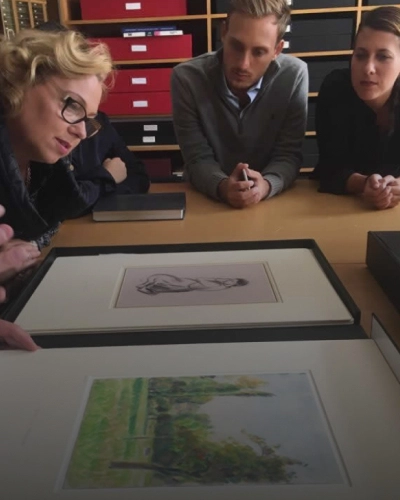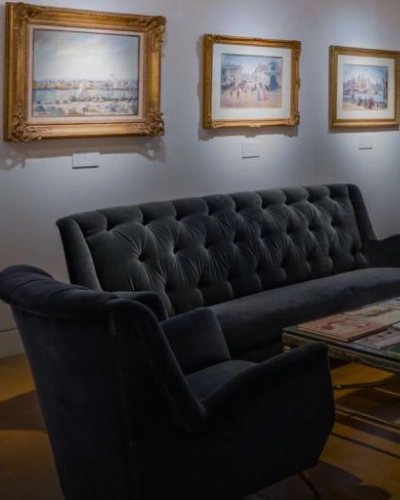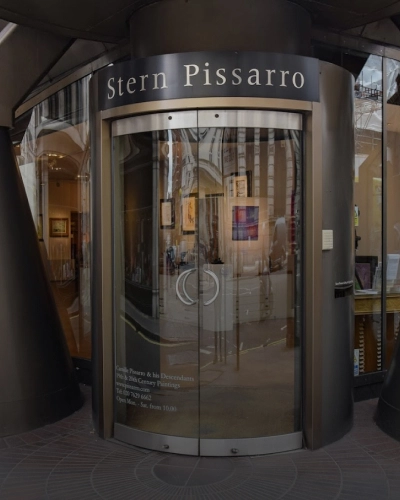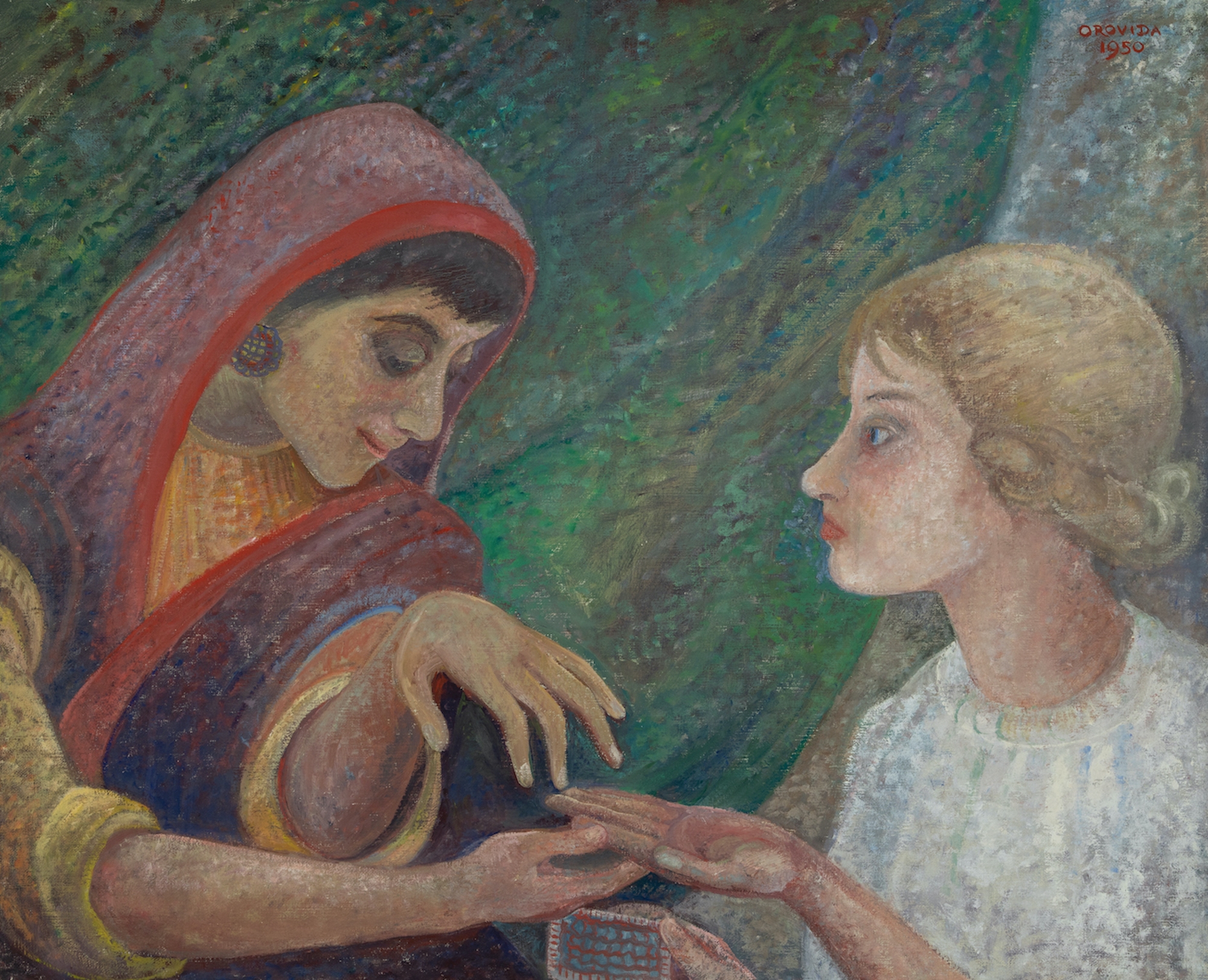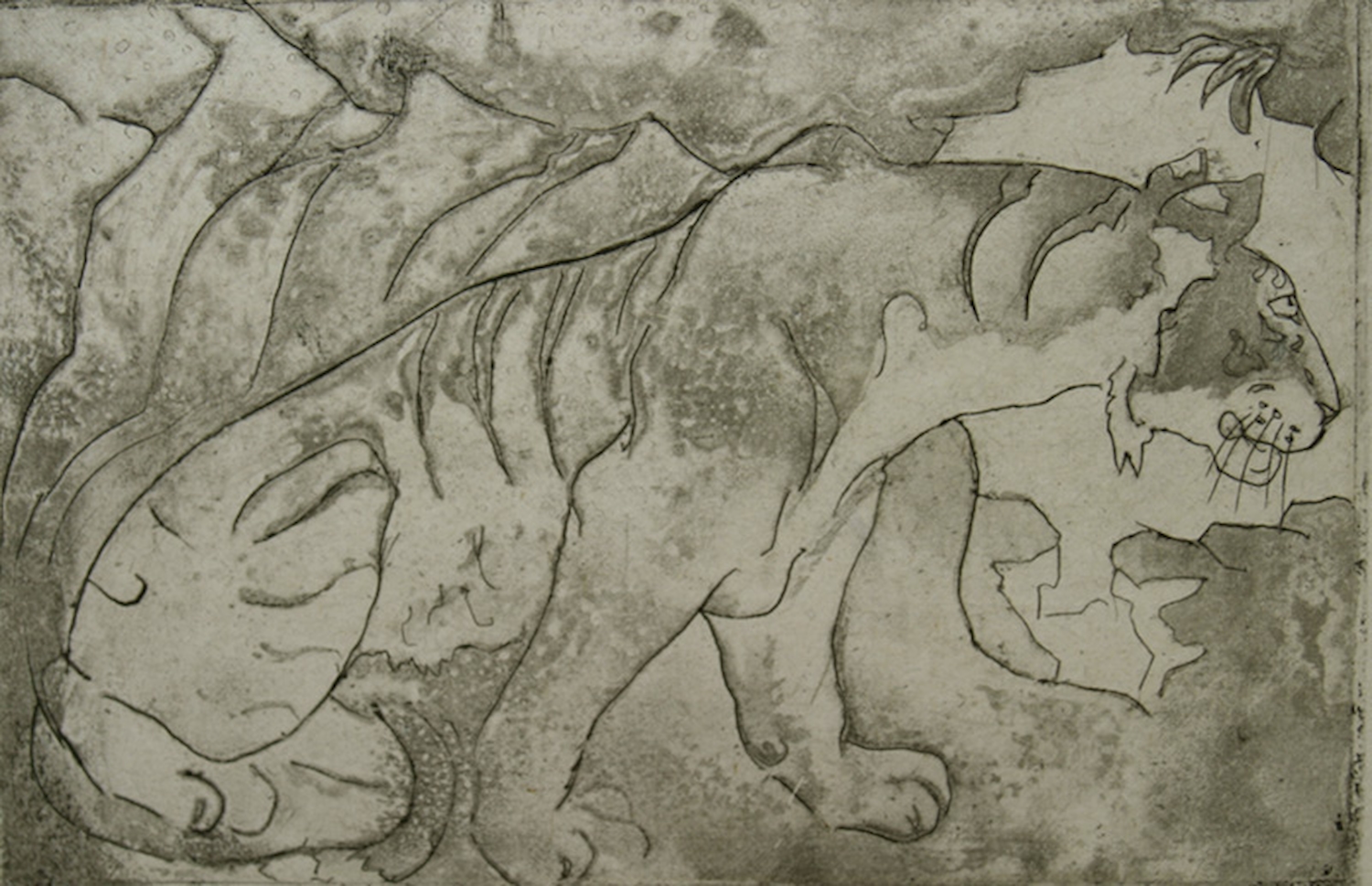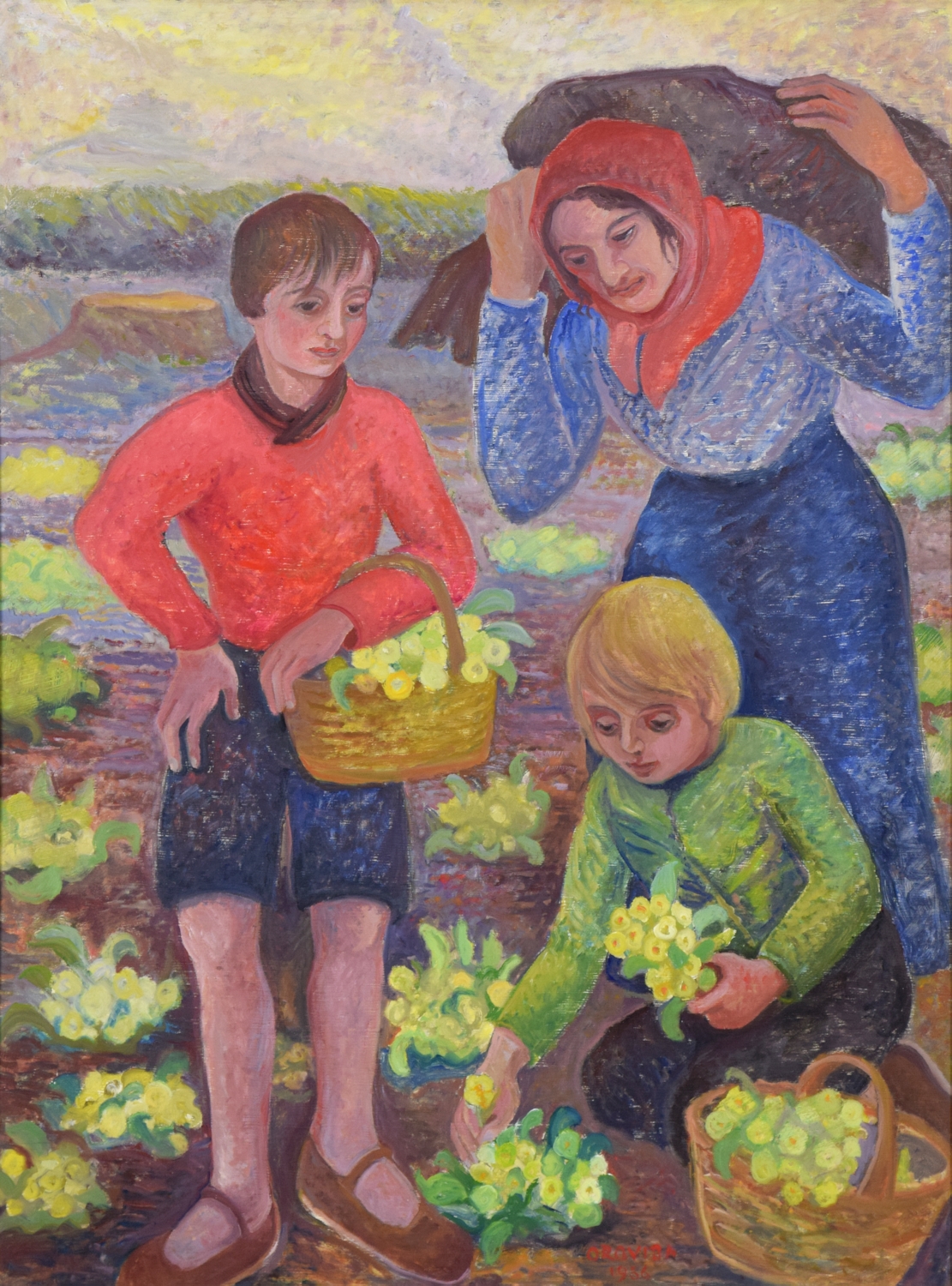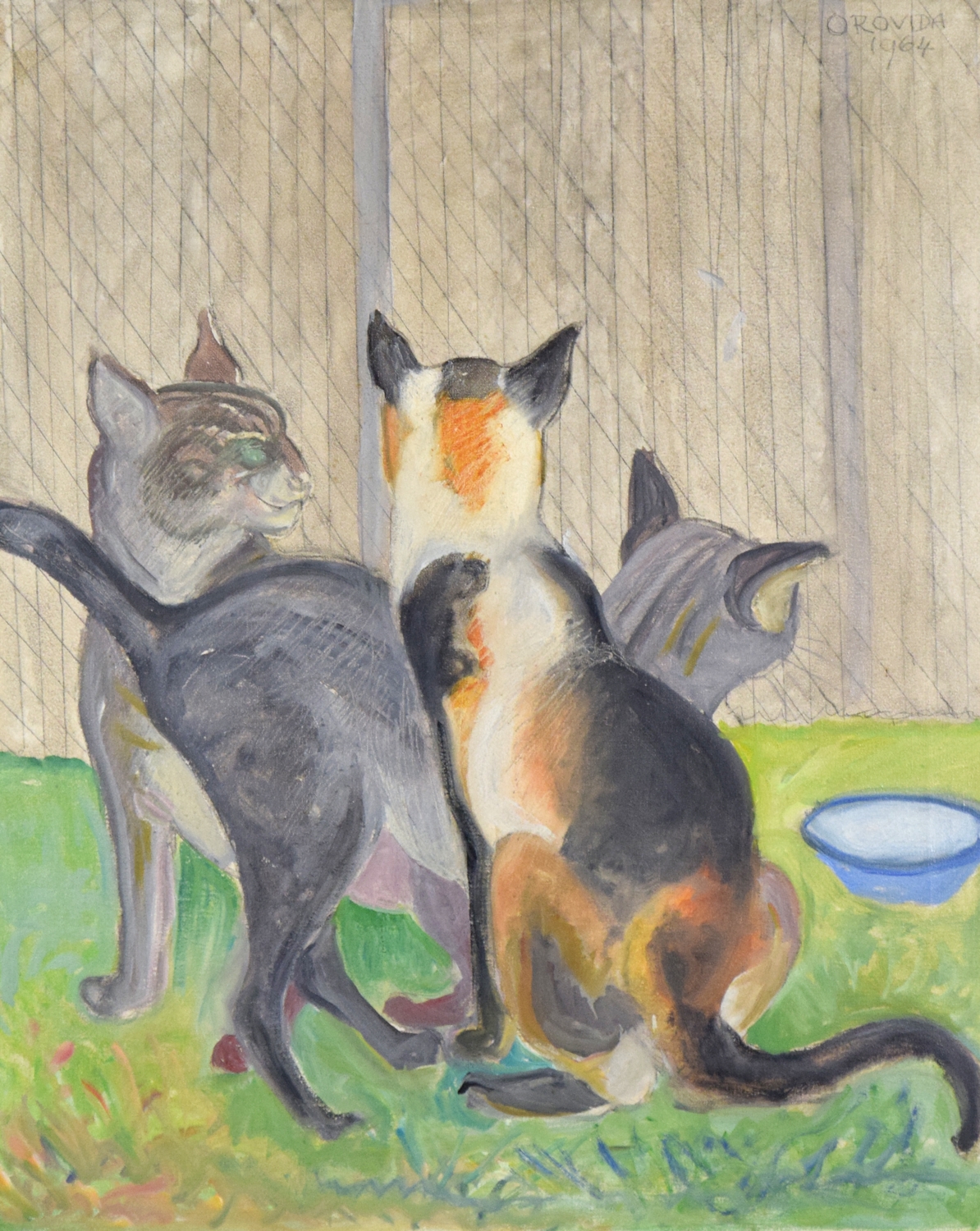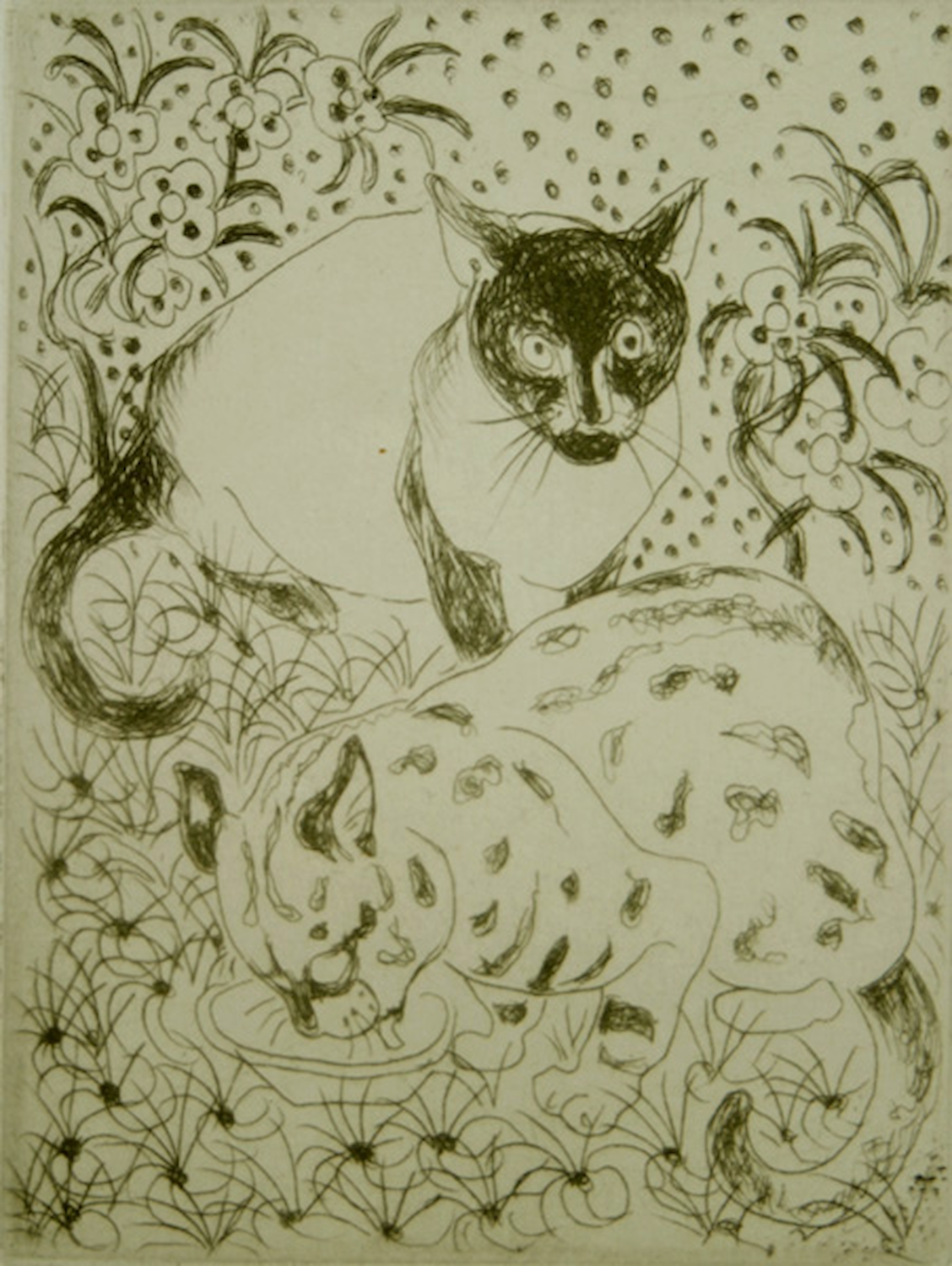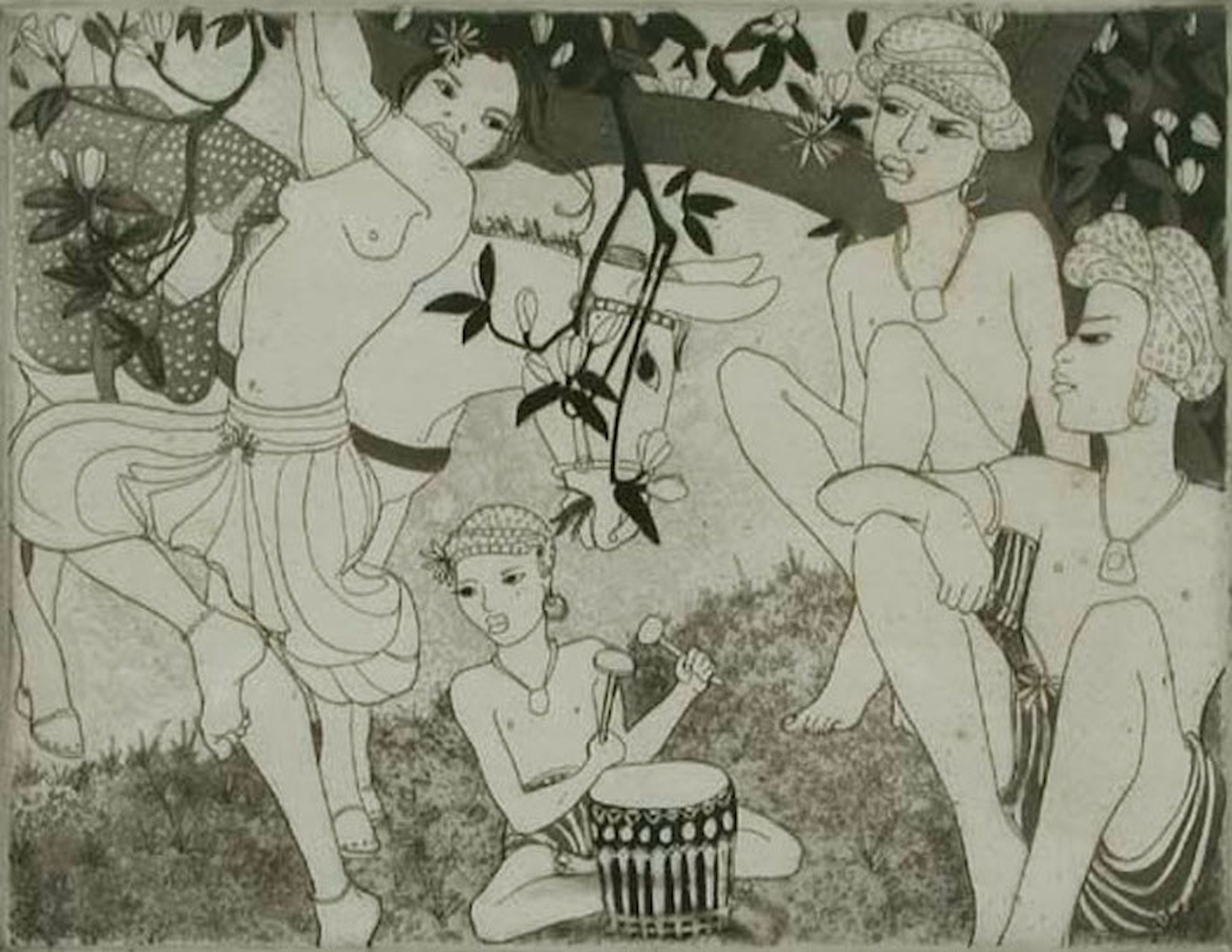Orovida Pissarro
1893 - 1968
The Fortune Teller
60 x 73 cm (23 ⁵/₈ x 28 ³/₄ inches)
Signed and dated upper right Orovida 1950
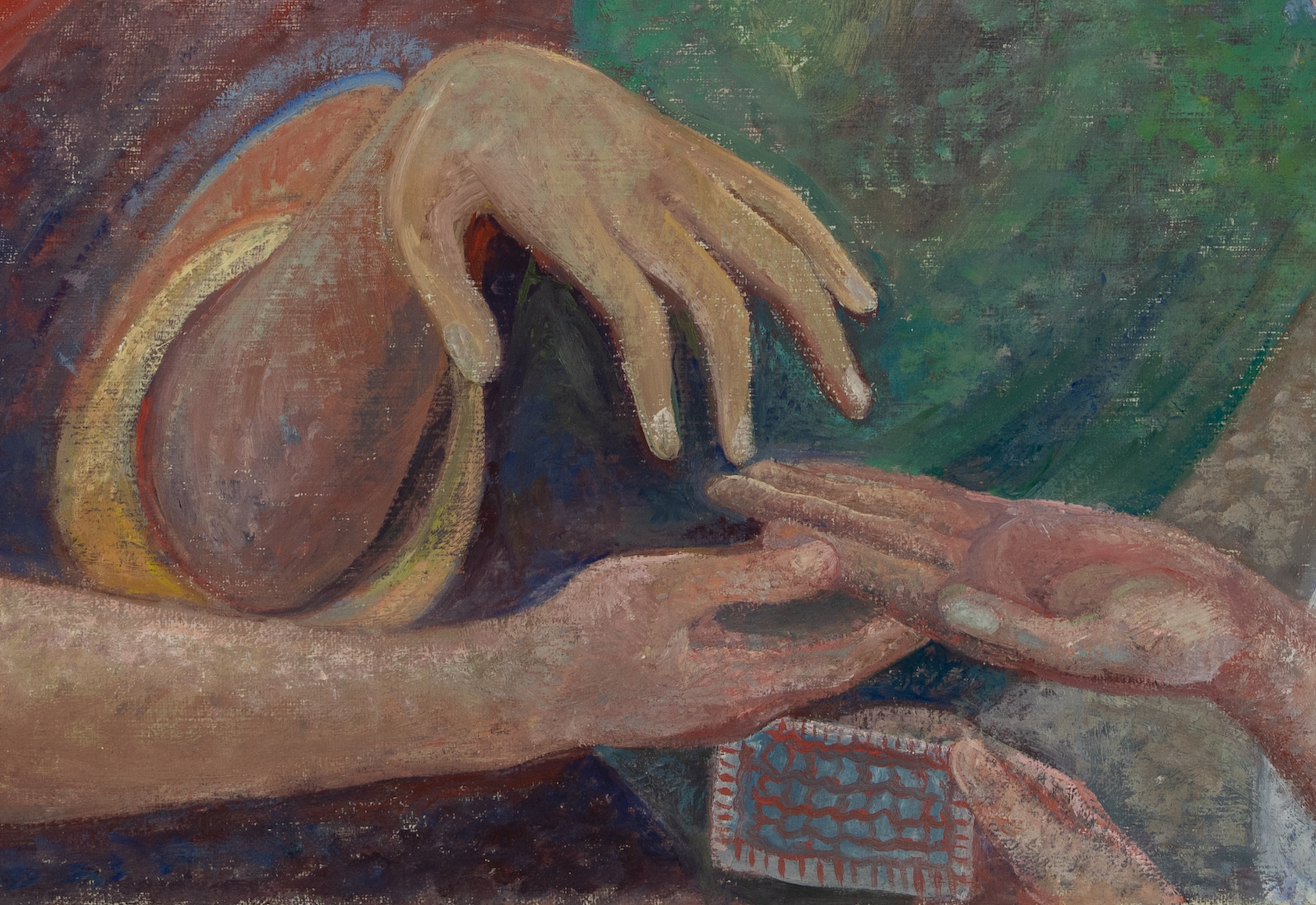
With John Bensusan-Butt, cousin of the artist
G Hassell, 25th November 1988
With John Noott, 10th June 1992
Orovida Pissarro
biography
She first learned to paint in the Impressionist style of her father, but after a brief period of formal study with Walter Sickert in 1913 she renounced formal art schooling. Throughout her career, Orovida always remained outside of any mainstream British art movements. Much to Lucien's disappointment she soon turned away from naturalistic painting and developed her own unusual style combining elements of Japanese, Chinese, Persian and Indian art. Her rejection of Impressionism, which for the Pissarro family had become a way of life, together with the simultaneous decision to drop her famous last name and simply use Orovida as a ‘nom de peintre’, reflected a deep desire for independence and distance from the weight of the family legacy.
Orovida's most distinctive and notable works were produced from the period of 1919 to 1939 using her own homemade egg tempera applied in thin, delicate washes to silk, linen or paper and sometimes embellished with brocade borders. These elegant and richly decorative works generally depict Eastern, Asian and African subjects, such as Mongolian horse-riders, tribal dancers and Persian princes, often engaged in dancing or hunting rituals.
The second half of Orovida's painting career, however, is marked by a sudden and dramatic change in style and subject matter. Due to the outbreak of the Second World War, there was a shortage in eggs which led Orovida to take up oil painting. This change in medium led her to embrace contemporary subjects from everyday life, thus returning to a more naturalistic style. Orovida was a gifted printmaker and worked with etching, engraving and lithography. Also an accomplished draughtsman, Orovida would observe animals at the London Zoo which she then juxtaposed with images of the local people of the countries they originally inhabited. Throughout her career she created many etchings of which both the British and the Ashmolean Museum in Oxford have a large collection.
The journey of Orovida’s career serves as a symbolic illustration of her relationship with her heritage. Her attempt to break away from tradition to find her own voice, only to return to her roots is apparent throughout her body of work which is emboldened by this journey. Towards the end of her life she was instrumental in developing the Pissarro family archive, established by her parents at the Ashmolean Museum in Oxford. Besides the Ashmolean museum her works can be found in many public collections throughout the UK. Orovida sadly never married or had children.
Orovida Pissarro
biography
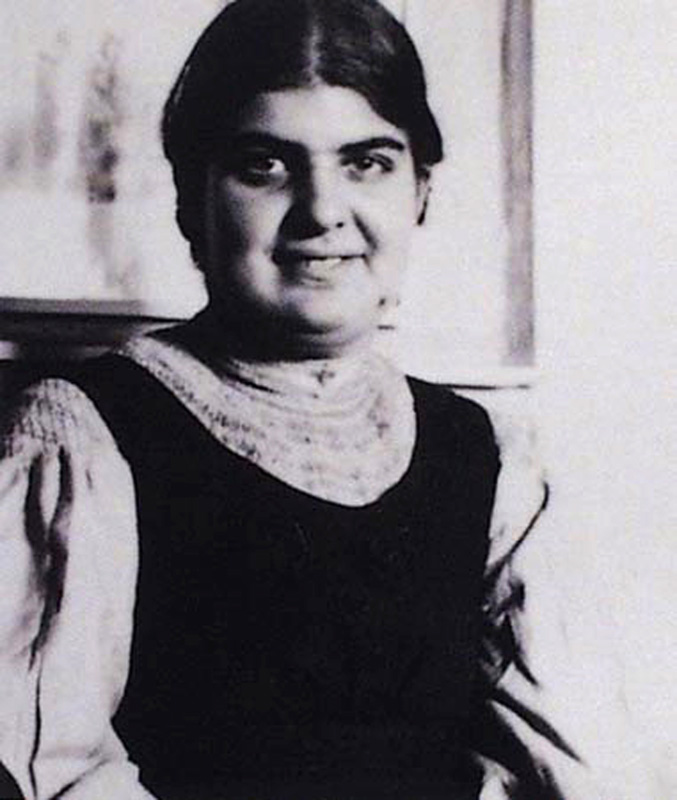
you may also like
1893 - 1968
The Calf
17.5 x 23.2 cm (6.89 x 9.13 inches)
1893 - 1968
Spring (Primrose Gathering)
101.5 x 76.4 cm (39.96 x 30.08 inches)


